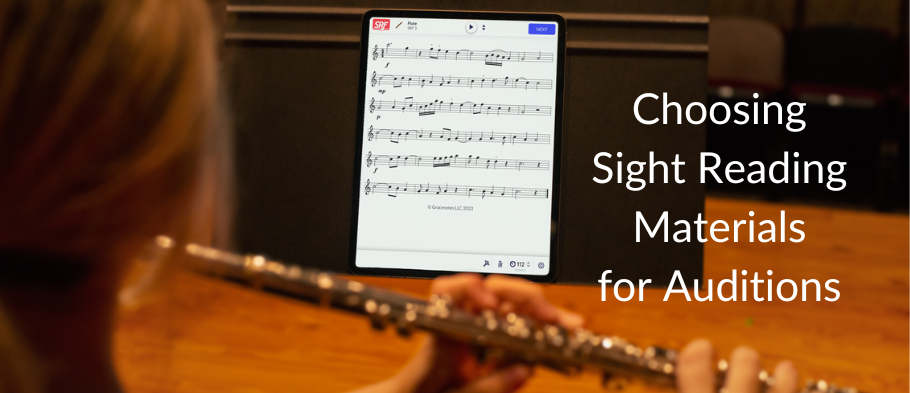So, you’re assigned the task of choosing the sight reading material for an audition.
Music teachers: we’ve all been there. It’s honor choir time. It’s district band audition time. It’s all-state audition time. If you are a member of your representative state music education association and you’re sending children to an audition, you most likely will be assigned or volunteered to a position to help with the process. So what if you are tasked with coming up with the sight reading material for the audition?
Before we get into some ideas, let’s chat about what this portion of an audition is and what it isn’t. Sight reading at an audition is to check how students do with on the spot reading of music. Do they understand the concepts? Are they able to sing or play those musical concepts in an adequate manner? What the sight reading portion is not, is a feel good piece of music that everyone can play or sing. It is also not a piece of music that no one can play or sing. That defeats the purpose. You want a spectrum of results and as Goldilocks would say, it has to be, “just right.”
So, here are some tips and tricks to get that sight reading selection just right.
Firstly, check to see if your state or organization offers sight reading guidelines. For instance, NY State offers the NYSSMA standards. If you have a soprano auditioning for all-state, she would want to practice NYSSMA level 6 examples to get prepared. If you are tasked with getting the sight reading, make sure you follow your state/organizational criteria.
If your state or organization does not offer standards, here is the easiest and quickest way to choose a piece of music: choose music one or two levels below what the performance level will be for this event. If your district band will be performing level 4 band music, choose a level 2 piece of music for the sight reading. It may not be exactly perfect, but it is a time saver.
If you have more time on your hands, because what music teacher doesn’t (?!), here are some more criteria to think about when choosing sight reading for an audition:
- Range Think about the maximum range for this particular instrument/voice and level. Then narrow that a bit to a more comfortable and confident range. Having a few notes on the low and high end of the range will help delineate the stronger players, but having it in a mostly confident range will be good for the average student.
- Rhythm Think about the rhythmic concepts that will be covered in the pieces of literature for this event. You will not want rhythms on the sight reading portion to be this difficult. Choose rhythms that are 1-2 grade levels below on average with only one or two complicated rhythms incorporated in case you want to really see who the top players may be. You will also want to include a tempo (or tempo range) in your considerations. It is said that rhythm can be the most challenging concept in sight reading.
- Intervals/melodic patterns Depending on the instrument/voice and level, include concepts that you can confidently say are standard. Then include a few more complicated choices to round out the top performers. For instance, if you have a middle school choir audition and they are generally comfortable with steps and leaps of 5-3 or 3-1, include all of those and then add one more such as 5-1.
- Form Do choose excerpts that have musical forms and standard chord progressions. Do not choose randomly composed literature. The goal is to set the student up for success and to have their brains thinking and preparing musical concepts they have seen before.
- Expression Include some expression in your sight reading examples. Take a look at the literature being used for the festival or event. Choose a few of these for your sight reading - keeping in mind you want it to be pretty standard for that level. And many times, your examples are short, so one or two are fine. A few dynamics, crescendos/decrescendos, and slurs/staccatos are pretty straightforward. Expression markings from Mahler are not.
Once you have your sight reading criteria, share those with the other teachers and students in your area. That way they can practice the criteria before the audition. One of the hardest and scariest components of sight reading for students is showing up not knowing the criteria at all, so choosing these guidelines and sharing them with the students is of utmost importance. Obviously, we believe Sight Reading Factory is the best resource for this, and we offer many state/organizational standards. If your state/organization does not have a sight reading standard, consider speaking to your representatives about this so that students are on an equal playing field and teachers do not have to struggle finding materials. I believe we all can say we want these students to succeed and setting them up for success with logical criteria is the first step. Happy sight reading!
To find out more about Sight Reading Factory feel free to contact us.
Share this article